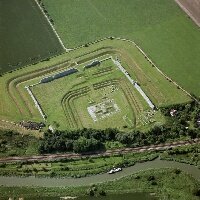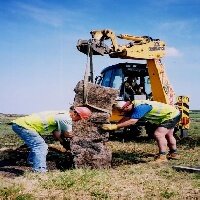Restoration, Reconstruction and Recreation of Archaeological Sites


Our aim in conserving the historic environment is to pass on to our successors what we value. Conservation involves many activities including restoration or reconstruction. International and national guidance is that such work should be approached cautiously and never carried out on a speculative basis. Applying such policies can be particularly problematic in the case of archaeological sites and ruins.
Many proposals for reconstruction will constitute development and will need to be dealt with through the planning system in addition to any requirement for scheduled monument consent. Local authorities also own large numbers of archaeological sites and sometimes propose restoration schemes of their own. Any proposals should be within the framework of this Policy Statement.
Traditionally, since the days of Ruskin and Morris, the UK philosophy of conservation has been very much against restoration and this approach is still the basis of modern policy guidance. In fact, individual cases over the years have adopted a number of different approaches. Intervention involving elements of restoration or other replacement of lost features, such as roofs, has sometimes been necessary either for conservation reasons or to improve the understanding and interpretation of structures.
Proposals involving restoration, reconstruction or re-creation of elements of archaeological sites continue to come forward on a fairly regular basis. Following widespread consultation, English Heritage agreed in 2001 a Policy Statement on Restoration, Reconstruction and Speculative Recreation of Archaeological Sites including Ruins. This statement conforms to national and international guidance.
Full discussion of the background to the policy and the appropriate supporting documentation can be found in the Policy Statement itself.
The English Heritage Policy on Restoration, Reconstruction, and Recreation on Archaeological Sites including Ruins is stated as:
30. The conservation of an archaeological site may potentially involve an element of restoration or reconstruction as well as repair, alteration, use, management and interpretation. The aim of conservation is to retain the significance of the site and to avoid damage. Therefore, as in the case of any proposals for works to elements of the historic environment, the significance of what is affected must be properly understood before proposals can be formulated leading to decisions about the scope of alterations or repairs.
31.Within that overall need, English Heritage believes that its current approach to restoration and reconstruction as set out above is in accordance with international and national guidance and is wholly justified in terms of its duty to conserve the evidence of the historic environment. It will continue, therefore, to consider proposals for restoration or reconstruction as it has done in the past, and will judge each proposal on its merits and within an overall assessment of how the works proposed will impact on the significance of the site concerned.
32.Significance involves a detailed understanding of the historic fabric of the site and how it has changed through time, and then an assessment of the values – both historic and contemporary – ascribed to that fabric. Significance may lie both in the earliest phase of the site, and in any changes to it. If the site has been deliberately ruinated in the past, this may be an important factor of the site’s significance as may its previous history of repair and conservation. Any assessment of significance should be based on an appropriate programme of conservation-based research, analysis and investigation.
33.In order to establish whether or not a proposal for repair, restoration or recreation is appropriate, it will then be necessary to assess the impacts of any proposals on the significance of the site and to establish whether any damage can be mitigated. Proposals which damage the significance of the site – and where that damage cannot be mitigated through careful design or the consideration of alternative solutions - are not likely to be acceptable.
34.If proposals for restoration or reconstruction are intended in whole or in part to improve a site’s interpretation, it is essential to consider whether the same result can be achieved by other means.
35.It is also important that those proposing such works assess the long term requirement and cost of maintenance, and can demonstrate that such work can be sustained economically.
36.English Heritage will in no case support proposals for speculative recreation. Nor will English Heritage support proposals which destroy, or damage significant original fabric or archaeological deposits.
37.Any proposals for restoration or reconstruction must be acceptable in terms of their impact not only upon the site itself but also on its setting. They must therefore be acceptable also in the context of the local planning authority’s development plan.
Criteria for Assessment of Proposals
The Statement also sets out the criteria by which English Heritage will assess proposals and lists the information that will be required with each proposal. Early consultation with English Heritage, local planning authority, County Archaeologist and possibly English Nature is advised since it may prevent abortive work on full proposal documents.What's New?
-
The National Heritage List for England is now live on the English Heritage website.
-
Welcome to the HER21 page. This page offers access to the full suite of HER21 project reports.
